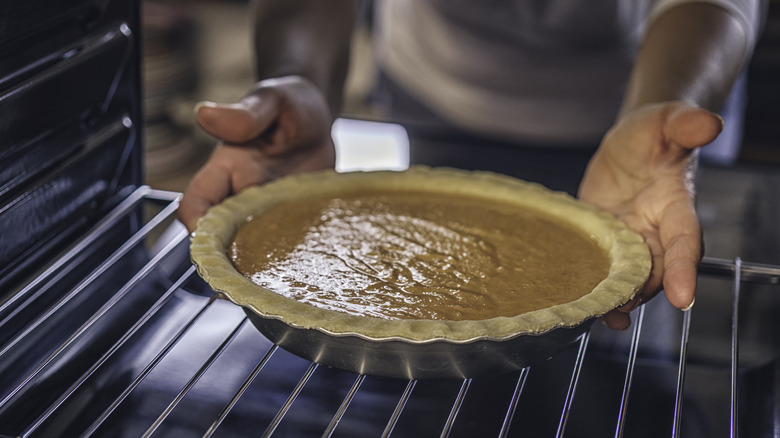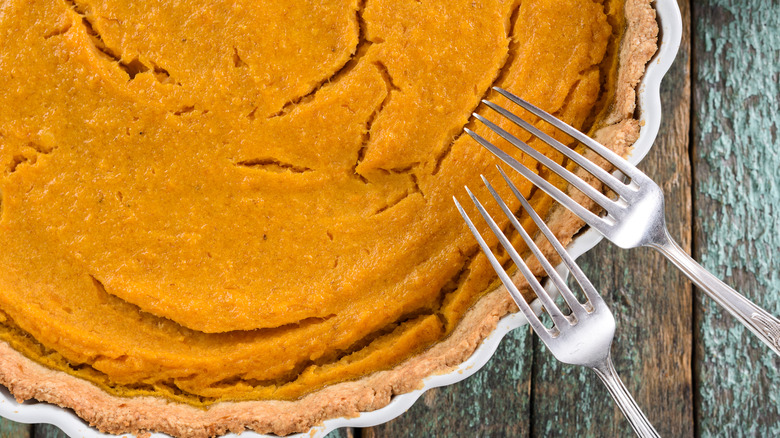Why You Should Leave Your Pumpkin Pie In The Oven After It's Done
One of the great pies in America's holiday catalog, no fall or winter feast is complete without a sweet, spicy pumpkin pie sitting on the countertop — so long as it didn't cool there, that is. Because, contrary to popular practice — or cliché, depending on how you look at it – pumpkin pie should actually be left to cool in the oven instead of the counter or windowsill.
Like cheesecake, pumpkin pie is susceptible to a certain amount of breakage if steps aren't taken to prevent it. While cracks on the surface don't affect the overall flavor of the pie, they don't exactly make for a picture-perfect presentation. There is a temperature difference of several hundred degrees between the oven and the countertop and such a drastic change in environment can cause the pie to cool too rapidly, leading to cracks in the surface.
Cooling the pie in the oven is an overall gentler process. Once the pie is finished baking, all you need to do is turn off the oven and allow the heat to gently ebb away. As this happens, the internal temperature of the pumpkin pie will cool at a much slower rate, greatly reducing the possibility of cracking. The whole cooling should take between 20 to 30 minutes. By then, it should be cooled enough to come out to be safely left out on the counter.
Why pumpkin pie cracks
As you may have guessed, there is a scientific reason behind the cracking of the pumpkin pie. Since the filling is essentially a thick pumpkin custard, a lot of eggs are used to make the mixture. Apart from helping give the pie its full-bodied character and helping the pie rise in the oven, eggs are nevertheless a temperamental element of the pie.
If the eggs become overcooked, their proteins tighten up so much that they cause fissures in the surface of the pie. While this normally happens around the edges, as those cook first, the center of the pie is still libel to crack. Remember, too, that the pie will crack when it cools too quickly. Because the residual heat of the pie continues to cook the eggs even after baking is completed, those proteins react to the change in environment and retract immediately when it's taken out of the oven.
What the oven does is offer a space for the pie to finish cooking in a milder cooling environment. As the temperature steadily lowers, so too will that of the pie, thereby keeping the eggs both from overcooking and cooling too fast. It is one of the easiest ways to keep your pie from cracking and remaining intact for dessert.

